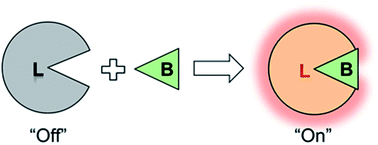A new optical boron detection method†
Abstract
The detection of boron, either as boric acid or phenylboronic acid, in natural or residual water, still faces a number of challenges. Here, we propose the use of 2,3,6,7,10,11-hexahydroxytriphenylene as an optical sensor for boron, using spectrofluorimetry or UV-visible spectrophotometry detection. We evaluate this sensor for the quantification of both boric acid and phenylboronic acid in aqueous solution. The limit of detection of the sensor using spectrofluorimetry is 10 ppb of boron for boric acid and 6 ppb of boron for phenylboronic acid, with the interference of metal cations efficiently eliminated by using a chelating agent such as EDTA. The proposed method involves a very simple experimental procedure and is easily amenable for use in field work.


 Please wait while we load your content...
Please wait while we load your content...